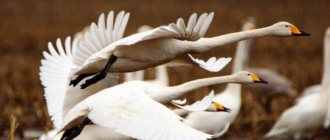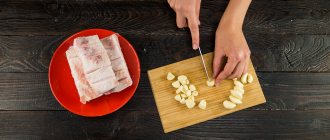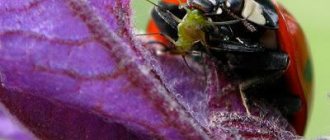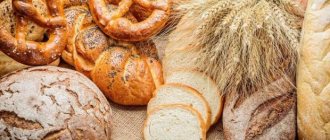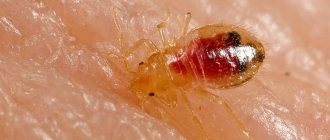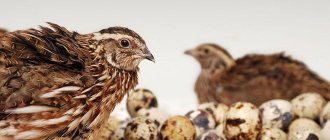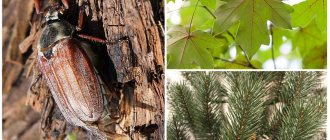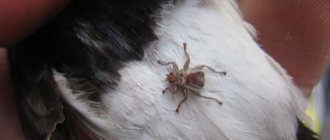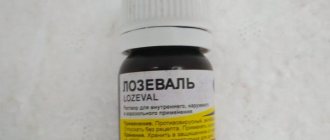Feeding wild wintering birds in your garden or park is not just an act of mercy towards our smaller brothers, but also a contribution to the future harvest. According to ornithologists, one tit can save up to 10 trees from pests per season, and one feeder provides food for up to 50 tits! Even a child knows that sunflower seeds are most often poured into the feeder. But there are many different kitchen scraps that can also become a source of food for birds. Some foods on our table are ideal for birds, while others may do more harm than good. Let's take a closer look at what you can and cannot feed birds.
What can and cannot be fed to birds in winter?
Bird feeders
Feathered creatures are warm-blooded, requiring good nutrition to maintain body temperature (+40 C). If things go poorly with nutrition, the bird’s body will begin to cool down. The instinct of self-preservation and hunger drive birds in search of food.
Compact feeders for tits and sparrows can often be found in courtyards of residential areas and parks. Concerned citizens organize similar structures on their balconies.
Bullfinches, sparrows, titmice, goldfinches, and jays flock to the feeder to eat. Often in large feeders you can meet uninvited and impudent guests - crows, jackdaws.
“Canteens” for birds can be made with your own hands or purchased at a pet store. The simplest design is a plank with a roof that protects from natural precipitation, suspended from the corners of a rectangle. There are also creative ideas for creating places for birds to feed from scrap materials. For example, from a milk carton, plastic container, tin cans.
What kind of cereal can you give?
Tits can be given any cereal, both raw and boiled. There is a myth that tits should not be fed millet because they die from it. Moreover, some say that millet is affected by mold, others claim some kind of oxide film on the cereal, and still others report low nutritional value, as a result of which the birds die with full bellies. But there is no evidence for these words - only rumors on the Internet.
Therefore, you can pour millet, buckwheat, rice, crushed corn and other cereals into the feeder. But don’t expect the tits to pounce on such a treat. My experiments in feeding birds have shown that tits do not really like grain feed.
But there are other types of birds - sparrows will definitely be grateful for such feeding. Therefore, pour cereals into the feeder - there is an eater for every food!
Optimal Poultry Diet
The question arises about the bird menu. If everything is clear with the diet of wild pigeons, it is worth learning more about the optimal filling of feeders for smaller birds.
Feathered creatures are not tidy. It is common for them to defecate while eating. That is why you should not pour a lot of food into the feeder at once, which can quickly become spoiled. Also, you should not mix feeds with different structure. For example, meat or lard should not be given together with cottage cheese.
The optimal food for birds is a special complex mixture, which should be purchased at specialized pet stores.
The complex composition includes seeds:
Additionally, rowan fruits and bread crumbs are introduced into the bird’s diet. In addition to rowan, you can give birds viburnum and hawthorn berries.
If the majority of birds are completely satisfied with this diet, then such miniature birds as titmice additionally need to be fed with fatty animal food. High-calorie food quickly saturates tits and gives them more strength. Lard and meat act as animal and fatty foods. In order for the birds not to swallow large pieces, but to peck at the food gradually, it is recommended to string the pieces on a thread in the form of beads and hang them near the feeder.
In addition, there is no need to promote the development of laziness in birds. After all, if the feeders are always full of grain, they will not strain and look for a worm under the bark of trees or pick up seeds on the surface of the ground. Such conditions dull the instincts of these creatures and make them lazy and careless.
Why do tits love lard?
Small birds have very fast metabolisms and require a lot of energy just to survive. This is especially true in the cold season, when additional energy costs for protection from the cold are added. Three reasons why tits eat lard:
- they are predators, lard is their natural food;
- fat contains a lot of energy, which is so necessary for tits;
- lard is available - every second fan of feeding birds in winter hangs lard for tits.
As a child, I read a book that described an ancient method of tanning hides. After preliminary mechanical cleaning, the animal skins were hung in the barn. At the same time, access was left for tits. The birds flew up freely and pecked the remaining meat and fat from the skins, as a result of which they became softer. Perhaps the tradition of feeding tits with lard has been going on for a long time.
What are the advantages of feeding tits with fat:
- high nutritional value;
- lard is cheap, in meat departments they give pork skins for practically nothing;
- it is easy to buy, even in comparison with seeds;
- you can use any fat (pork, beef, lamb);
- the lard hangs on the branch for a long time, which allows you to feed the birds at your dachas, where you appear once a week;
- tits stay on the piece for a long time, which makes it possible to observe them well;
- the lard also attracts other birds.
Disadvantages of feeding birds lard:
- it can only be hung in cold weather - lard spoils in the heat;
- You cannot feed tits with salted lard;
- pieces of lard on the branches do not look aesthetically pleasing;
- Fat can be stolen by cats and large birds (crows, magpies, rooks), so it is better to tie it to a branch. I have a video about the rook’s attempts to steal lard.
Prohibited food
Each order of birds has its own preferences. Sparrows and pigeons rarely refuse grain, and tits love seeds and lard. Birds need to be fed wisely. The first rule to follow is to eliminate salty foods from your diet. The peculiarity of the structure of birds is that their excretory system cannot cope with excess salt and provokes poisoning and death of birds.
Roasted sunflower seeds, which can cause liver disease, are prohibited. In addition, wild birds should not be given black bread and millet . Millet can become a source of toxic substances, and black bread can cause fermentation in the intestines.
In addition to salty foods, you should not put citrus fruits, banana peels, sour or spicy foods in the feeders.
Ordinary chewing gum is especially prohibited . Pichugi, mistaking chewing gum for a tasty morsel, peck at the discarded gum and die from a paralyzed digestive tract.
Why can’t you feed birds salted lard and fried seeds?
Any disease that affects a bird in the winter becomes many times more dangerous for it than it would be in the summer. Gastrointestinal diseases in birds are quite common, as during harsh winters they may eat junk food in search of survival. This food is offered to them by a person who knows little about the feeding habits of animals.
INTERESTING: It turns out that chewing gum thrown away by humans is often perceived by birds as a piece of bread. They peck at it, but then die, since the chewing gum completely inhibits and clogs their digestive tract.
When offering lard to tits and other birds, make sure that you do not cut it from the salty part. Salt is poison for birds. Their kidneys and liver cannot digest and remove it, and therefore such a product will be certain death for the small creature.
It would seem that sunflower seeds are the healthiest food for birds. But only if the seeds are raw. Roasted seeds absorb too much fat and the birds’ gastrointestinal tract cannot absorb it, causing poisoning, diarrhea and indigestion, which is very destructive for most species.
Features of harmful food for birds in winter
Acceptable seeds and cereals
For urban pichugs, commonly used cereals can be considered as food. When you go outside, you don't have to wonder if birds eat rice. You can safely take with you a bag of millet, wheat, rice and oats.
Read also How to preserve Turkish cloves in winter
In addition, birds will not refuse the seeds of such vegetable crops:
Forest birds love pine cone seeds and acorns. If, while going for a walk, a person takes with him a small piece of white bread, then before feeding it to the birds, he needs to crumble it.
Additionally, birds can add crushed eggshells , which will become a source of calcium for them. Chopped apple pieces, cottage cheese, and small pieces of raw beef can also be added to bird feeders.
From an early age, parents try to instill in their children a wonderful trait - love and the desire to come to the aid of our smaller brothers. The simplest step in this matter is to build a simple feeder and treat the birds from time to time. However, do adults themselves know how to properly provide this assistance so as not to harm the birds? Let's look at this interesting and at the same time difficult issue.
What does a tit chick look like? Tit chick: what does it look like and how to feed it?
Tits are one of the most common birds in the vastness of our country. They are easy to find not only in forests and fields, but also in any city. Pay attention to the bird the size of a sparrow with a lemon-yellow breast, snow-white cheeks and dark blue wings - this is the same tit. These birds are sedentary; in the fall they rarely fly away, preferring to winter near human habitation.
If you want to feed the tits, hang a piece of lard in a feeder outside the window and sprinkle some bread crumbs - the tits will be right there. But in general, these birds are insectivores, and in nature their diet consists of all kinds of insects.
But what to do if a tit chick falls into your hands? These birds breed twice a year. The first clutch appears in April, and the second at the end of June. The cubs grow quickly, and most often in spring and summer, under the trees here and there, a tit chick - a fledgling - can easily be found. That is, the one that fell out of the nest, but has not yet learned to fly. How to distinguish it? The tit chick (you've probably seen a photo of such a creature of nature) is generally similar to its adult counterparts - the same yellow breast with a dark stripe in the middle will easily help distinguish it from other birds. Except that the color of the wings of young tits is not as bright as that of adults, and the plumage is softer, since it has not yet had time to change from baby fluff to real feathers. What should we do with it?
Remember that if you are ready to take responsibility for the chick, then this is for life. If you, having played enough of a rescuer, fed the chick and kept it in a cage for at least a couple of days, decide to release it into the wild, with a high degree of probability it can be said that it will die. At the same time, the tit chick is completely unpretentious in its maintenance. It can be kept in a cage, but do not expect the bird to become tame - tits are very poorly socialized, remaining quite wild until the end of their lives.
By the way, these birds are often valued among canary breeders. The latter birds adopt the chirping style of tits, and songbirds with this skill are especially respected. Therefore, sometimes they are placed in cages with canaries as a “singing teacher.”
How to feed a tit chick? It is best, of course, that the bird’s diet consists of the food that it would eat in the wild. The best option is insects. But if this is not possible, then tits, like other representatives of songbirds (and ornithologists classify them as this species), can be supplemented with grated boiled eggs, parsley, lettuce, pre-chopped, and non-acidic cottage cheese. The most convenient way to do this is with tweezers. It is important to ensure that the tit chick opens its beak independently when feeding. Chicks can and should only be fed with boiled drinking water. Caring for them is generally similar to caring for canaries, and therefore, as soon as you are sure that you have established the nutrition of your new charge, consider that half the battle is already done. All you have to do is feed, water, and remove waste from the cage on time, and your bird will feel just great and delight you with its cheerful chirping.
Is it possible to feed rice to birds in bird feeders?
One of the budget products that is found in almost every home is cereal. Most often, this is what birds are fed with. But is every grain good for them? After all, when doing good, it is important to follow a number of rules and take into account the peculiarities of the life activities of the wards.
Is it possible to give raw/cooked rice?
Many ornithologists notice that rice is most often found in street feeders. Raw or heat-treated. Do birds eat it? Yes, but you absolutely cannot do this! Rice tends to swell from moisture. Once in a bird's tiny stomach, the grains can cause her suffering.
Is it possible to put other cereals in the feeder?
Other common cereals, such as buckwheat and pearl barley, are also dangerous for birds . They have similar properties to rice and expand in a humid environment. Oatmeal and millet (unrefined millet) are considered harmless. They are sold in all pet stores.
Note! Millet is part of a special cereal mixture for birds.
Where does a sparrow usually live?
You can meet sparrows almost everywhere. They massively populate the centers of cities and towns. Habitat _
wide,
the sparrow
is found from Western Europe to the Sea of Okhotsk, in East and Central Asia. It is widespread even in Siberia.
Interesting materials:
Where was the television first invented? Where are Philips TVs assembled in Russia? Where are cherries grown in Russia? Where is the microphone in a smartphone? Where are old TVs accepted in St. Petersburg? Where is the front camera on the phone? Where is the voice recorder in a Samsung phone? Where is the app store on a Samsung TV? Where is the air conditioner located in the carriage? Where to hang the towel holder?
What is the best way to feed birds in bird feeders?
Experts recommend buying food rich in vegetable fat, such as rapeseed and flax . More budget-friendly options include raw, clean sunflower seeds (seeds). The birds will eat them without leaving a trace and will be satisfied.
Sample “healthy eating menu” for street birds:
- Lard (visceral fat). It must be raw, and in no case smoked, salted or peppered. Raw lard helps birds stay full for a long time due to its caloric and nutritional content. It is not necessary to chop it, just hang a piece by a wire. Then it will be convenient for the birds to sit on it and peck in small portions.
- Coconut and unsalted butter are very good food for insectivorous birds (great tits, nuthatches, blue tits, blackbirds, etc.). You can add a mixture of various grains and seeds to butter, freeze it, make a hole in the prepared form and thread it through a rope.
- Dried berries of red and black rowan, serviceberry, elderberry, hawthorn, blueberry, etc.
- Dried fruits (apples, pears). They are popular with starlings, waxwings and thrushes.
- Unroasted melon, watermelon, and pumpkin seeds.
- Woodpeckers and nuthatches prefer chopped nuts (walnuts, peanuts).
- Lightly salted cheese, cut into small cubes.
- Dry crumbs of white bread are a real treat for sparrows.
- Ready-made mixtures for birds from the pet store.
What to feed tits at home. LET'S FEED THE TITS
A titmouse began to fly to my balcony, I fed it, and now five cute birds live on my balcony every day
Whenever possible, I watch them, it is a very interesting sight.
It turns out that these are such curious birds that there is no place on the balcony where they would not look.
They sit closer to the window, stretch out their heads and try to look into the room through it.
Tits appear on my balcony very early in the morning, and fly away when it is already completely dark. You start to get used to them and look forward to them every day.
Usually tits fly to cities from the forest after November 12.
In the fall these are a few timid tits, but by December all the surrounding feathered creatures know where they can make money and fly to the cities
Why is it important to feed tits?
Pigeons and sparrows are familiar city birds.
They themselves will not disappear; they know how to get food for themselves in the city.
Tits are forest birds, and they are insectivores.
Only fatty, high-calorie food is suitable for them, and not just any food.
It is much more difficult for them to find food in winter.
Out of 10 tits, due to hunger, only 2 survive until spring (and in frosty winters 1-2).
Out of 10 sparrows, 10 will survive until spring (like crows, like pigeons). .
Forest birds do not know how to feed from garbage dumps, like pigeons and sparrows.
They either destroy pests, or - if there are none (pests) - then they die.
This is why it is so important to feed them in winter: so that they survive until next spring.
Birds need to be fed regularly, because they get used to it and wait, losing precious minutes that they could spend searching for food.
These are very useful birds.
Especially for those who have their own home and garden.
Do not drive away the titmouse if it has settled with you, feed it, it will definitely respond kindly to you
In the places where feeders are placed, tits simultaneously collect all the wintering insects on the trees, bringing great benefits to the gardener.
By the way, it is advisable to maintain extensive hedges at the dacha and near houses - birds will be happy to settle in them.
You can decorate your garden bushes and feed the birds with delicious garlands - string nuts and berries on strings and hang these necklaces on branches.
What to feed titmouses?
Millet and crumbs are not suitable for bird feed - they are low in nutrition and tasteless, it’s the same as putting people on a diet of crackers.
You can prepare such a tasty and nutritious dish: melt a piece of fresh lard, add sunflower, melon, pumpkin, watermelon seeds, lightly crushed walnuts, peanuts, raisins, dried cherries, hop cones, chokeberries, freeze
Delicious nutritious food is ready.
If you don’t have time to do this, you can give the birds all of the above seeds, non-roasted seeds and nuts, grated hard-boiled egg yolk, butter and unsalted lard (in weather -5 and colder), lightly salted cheese, cut into small cubes (with a side of 3- 5 mm).
Nuthatches and woodpeckers will not refuse pieces of lard, unsalted raw pork, hung on branches. Salty lard gives birds stomach ache. If you grow sunflowers, it would be a good idea to prepare several heads and hang them in the winter.
Now is not too late to make a “house for a titmouse”
The simplest feeders are not at all difficult to make; it will only take a couple of minutes.
For example, take large juice bags (plastic bottles will also do), cut a square hole on the side measuring approximately 6 by 8 cm, and leave a 1 cm high side at the bottom so that the food does not spill out. You make holes at the top with sharp scissors, thread the rope through - and that’s it.
The feeder is ready
Feeder options
To attract the attention of birds, you need to scatter seeds around on the snow, and hang a piece of unsalted lard, cheese or butter nearby.
It is most convenient to hang the resulting house directly on the window or on the balcony, but then only tits will fly to you.
To admire the variety of birds, it is best to hang the feeder in the trees.
What should not be given as food
Birds are prohibited from feeding spoiled food supplies that have fermented and are covered with mold. But there are also a number of restrictions that apply to products familiar to humans. They can cause irreparable damage to the health of birds and even threaten their lives :
- Salted seeds , pistachios, cookies, crackers. Birds do not have sweat glands. The entire burden of removing excess salt from the body falls on the kidneys, so they may refuse heavily salted food. The musculoskeletal system also suffers, because some salts tend to be deposited in the joints. Then any movement of the bird will cause severe pain.
- Roasted nuts . This is where fats can cause harm to the body. When oversaturated with them, the organs of the digestive system (pancreas, liver) suffer.
- Rye bread . Due to the accelerated fermentation process, a situation often arises when the bird is blocked from breathing due to gases. This happens because the goiter begins to compress the trachea.
- Fresh wheat bread . It is dangerous because in a humid environment it turns into a sticky substance. It has difficulty moving through the digestive tract and causes indigestion.
- Cherry , peach, apricot kernels, as well as almonds. They are easy to poison because they are rich in hydrocyanic acid.
- Old, rancid millet . Harmful fats accumulate on its surface.
- Potato . The alkaloid solanine, which is found in raw tubers, causes poisoning in birds. The high concentration of starch in boiled potatoes creates an unwanted burden on the stomach.
- Mushrooms . When consuming mushrooms, there is a high probability that spores of clostridia, the causative agent of botulism, will enter the bird’s body.
- Canned food . When preserving foods, sugar, salt, and vinegar are used that are harmful to poultry health.
Read also: When to cover strawberries for the winter in Khabarovsk
General rules for complementary feeding
Once you start feeding birds, make it a habit. Regularly delight them with healthy treats. Birds quickly remember the place of feeding and get used to it . Don't forget: we are responsible for those we have tamed!
Important! The more varied you organize your menu, the more species of birds will be interested in your feeder.
From time to time, empty the feeder of leftover food. Rot and mold are fertile ground for the development of harmful microorganisms .
How to quickly attract birds?
12 Tips to Quickly Attract Birds to Your Yard
- Set up a bird feeding station. ...
- Tempt with the right treats. ...
- Feeder placement is key to success. ...
- Set up a birdbath. ...
- Attract attention with bright colors. ...
- Install a birdhouse. ...
- Encourage nesting in the yard. ...
- Install the nozzle.
11 Jan 2022
THIS IS INTERESTING: How long does it take to boil eggs?
Is it possible to feed rice to poultry?
Most inexperienced farmers are interested in whether it is possible to add rice to bird feed. It seems that it is the same grain as barley, wheat and others. A limited amount of rice, rich in carbohydrates, minerals and B vitamins, will not harm the bird and will have time to be absorbed. However, overuse of this cereal can cause paralysis and even death in chickens .
It is recommended to feed rice to birds during the daytime . Mix it, for example, with vegetables, grass or other feed.
Occasionally feed the birds with boiled rice diluted with milk . Chickens especially love this delicacy. They quickly get full and become energetic.
It is useful to feed birds rice flour and chaff:
- Mix rice (preferably unpolished) and other food in a ratio of 1:3.
- Dilute a little with water or milk.
Feeding rice alone or its frequent use is unacceptable . The productivity and well-being of a bird depends on the diversity of its diet.
The best products for birds from our table
Fruits and berries without seeds or seeds
Many fruits, berries, raisins, fresh grapes and even bananas and oranges can be used to feed birds. They will certainly enjoy this treat. While many birds will enjoy the fruit in hot climates, those birds that stay with us for the winter will also get the opportunity to enjoy a vitamin supplement.
Place sliced apples, tangerine slices, banana slices, grape halves and melon rinds inside the feeders, hang them on thorns or thin tree branches, and the birds will certainly appreciate the treat. Chopped or dried fruits and berries (for example, cranberries) can be strung on a string to create a garland that will not only feed the birds, but also decorate the garden.
Boiled rice
Leftover cooked brown or white rice often ends up in the kitchen, and rice porridge will also appeal to wild birds in your garden. Some species of birds, such as pigeons and turtle doves, are able to eat raw brown and polished rice. However, other species are unlikely to enjoy it because they find the grains too hard.
Pasta
Leftover cooked pasta can also go into the feeder. The pasta should be soft, and before serving, it should be cut into pieces small enough for the birds to hold it in their beaks. However, never feed your birds pasta that has been topped with rich sauces, hot spices, or melted, gooey cheeses.
Vegetables
In the wild, birds eat a wide variety of plant foods, and sliced vegetables can also be a welcome treat. You can offer your birds pumpkin, frozen green peas or corn (they should be thawed first before putting them in the feeder). Pieces of canned vegetables from vegetable mixtures can also be offered to birds occasionally.
Salo
Due to its very high caloric content, lard is one of the best products from our table that can be offered to birds. This is an excellent winter food for birds! Lard is found in bird treats in combination with a variety of ingredients, allowing it to be used to attract different types of birds.
Treats made from seeds, nuts, seeds and melted lard can be shaped into different shapes, such as balls, bells and rings, to enhance your bird feeding experience. You can also cut the lard into sticks or grate it so that even more birds can try it. Attention! Only unsalted lard is used to feed birds!
Boiled potatoes
This may seem implausible, but not only people, but also birds love to eat potatoes. You can treat the birds with leftover fried potatoes from your table, offer them mashed potatoes or whole boiled potatoes. These dishes are guaranteed to be popular with your feathered friends. However, avoid processed potatoes such as potato chips.
Peanuts and various nuts
Peanuts are a high-calorie, high-fat food that attracts many wild birds, including jays, sparrows and chickadees. Because the nuts do not freeze until they become hard, they are ideal for winter feeding, whether you offer shelled or shelled peanuts.
But never offer birds peanuts with any additives, or with chocolate or other coating. Also be aware that peanuts may contain high levels of a natural toxin that has been linked to bird death. Therefore, it is ideal to buy groundnuts that are designed specifically for feeding birds (can be found at a pet store). Other nuts such as almonds, walnuts and pecans are also attractive to birds. All nuts must be raw (not roasted).
Oatmeal and cereal
Oatmeal is also great for many birds. Oatmeal can be a good source of nutritious food for birds in your garden. Moreover, such feeding is easily accessible and is often available in our kitchen. But still, it is best to use raw oats, including oat flakes, for feeding birds, since boiled oatmeal can harden around the bird’s beak.
Cereals
Millet attracts mainly house sparrows, pigeons, finches and reed buntings (if they winter in your area). However, many ornithologists do not recommend feeding birds with millet, since it has few nutrients and quickly oxidizes in the open air, which is not beneficial for birds. Millet and wheat are suitable for birds in their raw form. And almost any cereal boiled without salt can be used, including buckwheat.
Eggs and eggshells
Boiled eggs can be added to the feeder as they contain many important nutrients for birds. Crushed eggshells are also useful for birds, as they are an important source of calcium for all types of birds and are good for the digestion process.
Pumpkin seeds
When cutting up a pumpkin, we often end up with a whole mountain of seeds, so why not offer them to the birds? Pumpkin seeds are very nutritious for birds, especially in the fall when they need more energy to migrate, molt, and store fat to withstand the cold. Pumpkin seeds are high in carbohydrates and fat. They are a good source of protein, various trace elements and nutrients that are necessary for a complete diet of wild birds.
Raw seeds, just removed from the pumpkin, can be immediately poured into a feeder, or you can pre-dry them. There is no need to grind the seeds; the birds will handle this task themselves, tearing off pieces of the peel to get the pulp.
What can you feed the birds?
Seeds. Unroasted sunflower seeds can be an excellent food for birds. You can also give pre-dried seeds of watermelon and melon, pumpkin and even zucchini.
Cereals. Is it possible to feed birds millet in winter? Not all experts advise doing this, but the main thing is that the cereal is without added oil, salt, or sugar. It is much better to give the birds oats, rice, millet, pearl barley, dense oat flakes (intended for long cooking) and rolled oats, as well as dried corn.
From fruits, you can treat your feathered friends with apple slices and dried berries.
Thrushes, bullfinches and waxwings, as well as some other forest birds, readily feed on berries of rowan, viburnum, bird cherry, hawthorn, cranberry, and lingonberry, collected and dried by humans in advance.
For some insectivorous birds, consuming a boiled egg will have a good effect, because this product is a source of protein in its pure form.
Read also: How many times a year does a lemon bloom?
What foods are poisonous to squirrels?
Toxic foods are poisonous to squirrels and should be avoided completely. … UNHEALTHY FOODS
- Foods high in sugar (candy, cookies, muesli, sugary breakfast cereals)
- Foods high in starch (pasta, bread, rice, potatoes)
- Salty food.
- Fast food for humans.
- Cashew nuts.
- Sunflower seeds.
- Dried corn.
- Pine nuts.
THIS IS INTERESTING: How long does it take to learn how to cook?
What should you not feed birds in a feeder in winter?
Now let's look at the prohibitions. So, the main thing that is prohibited and in no case should appear on the menu of feathered friends is:
- Fried and salted - it is correct to give seeds and nuts only unprocessed and not fried, and lard should only be in its pure form, always without the addition of seasonings and spices, salt. “White Death” is a direct poison for feathered friends, since their body is not able to process it, and therefore the animals will certainly die.
- Products made from rye flour - black bread and other derivatives can lead to gastrointestinal upset and death of animals. In general, bread is not the best food for them, because, as a rule, it contains salt, sugar, and baker's yeast. However, it is permissible to put a little crumbled, dried white bread and crackers in the feeder, but they must certainly be unleavened.
- Spicy and sour foods, all citrus fruits (and even their peels!) are also prohibited.
- Any type of cabbage, potatoes, onions, greens should not be included in the bird's diet.
- Bananas and their peels can have a detrimental effect on the body of birds.
- Milk and all dairy products are also prohibited.
- Among the cereals, buckwheat, peas, and wheat groats can cause harm to them.
- Sweet baked goods and yeast baked goods are not allowed.
In addition, you should not feed birds expired and spoiled food - such food is not healthy not only for humans, but also for animals!
You will find a more detailed answer to the question of what is the best way to feed birds outdoors in winter and why, as well as advice from an ornithologist biologist in the following video:
A little advice from ornithologists: it is better to hang some bird food (for example, crackers or a piece of lard) from a branch on a tight rope so that the birds can “peck” it, but do not drop or lose it, and also so that they do not swallow food too large for them. them in pieces.
What food is best for feeding wild birds?
The high nutritional value and high calorie content of the food will give the birds a lot of energy and ensure the creation of fat reserves that will help the birds survive the cold winter nights. Therefore, you need to feed the birds in your garden with quality food.
Most garden bird species will enjoy sunflower seeds, nuts, and live or dried mealworms. For convenience, you can use ready-made specialized high-quality mixtures for birds. At the same time, choose food that contains a large amount of sunflower and millet seeds. Mixtures with lots of unappetizing fillers, such as wheat and corn, are not very attractive to birds.
Avoid seed mixtures that contain beans, peas, rice and lentils. Only large species of birds can consume them in dry form, but such birds very rarely fly to feeders. But prepared bird food and sunflower seeds are not the only suitable foods you can feed your birds.
By using kitchen scraps as bird food, you are using your excess food for a good cause. But you could just throw them away! By turning waste into food for birds, you have nothing to lose. And the birds enjoy a wide variety of food, flying to the feeders again and again.
Attention: do not forget that the basis of the diet when feeding birds should still be specialized mixtures or sunflower seeds. If birds ate nothing but kitchen scraps, they would not be able to obtain enough nutrients for healthy growth and energy. However, poor nutrition can lead to health problems, such as obesity or feather deformation. To avoid harm, offer food scraps in limited quantities.
The most frequent visitor to feeders is the common great tit, which is capable of eating a wide variety of food types. © Lyudmila Svetlitskaya
conclusions
As conclusions, here is a complete guide and advice from ornithologists in one table:
| What can you feed | What not to feed |
| Unroasted and unsalted sunflower, pumpkin, flax, watermelon and melon seeds | Black rye bread |
| Unsalted lard and meat | Millet and wheat groats |
| Dried berries: rowan, viburnum, bird cherry, hawthorn, cranberry, lingonberry | Baked goods and yeast baked goods |
| Wheat bread crackers | Potatoes, peas, cabbage, onions, spicy herbs |
| Eggshells and chalk | Dairy |
| Boiled eggs | Any salted, fried, smoked, spicy foods |
| Non-roasted nuts: walnuts, pine nuts, hazelnuts, almonds, cashews, peanuts | Spoiled food, rancid grain products |
| Cereals: oats, rice, millet, pearl barley, oatmeal | Cereals: millet, buckwheat and barley crops |
General rules for complementary feeding and how to install the feeder correctly
In addition to choosing food, it is also important to choose the right place to install the feeder. So, it is better to choose small edges or clearings where birds often fly. It is better to install the “house” at a height where other animals and children, who may accidentally or deliberately spill food or add something harmful, cannot reach it.
You should also take care of the feeder itself. Ideally, it should be made of moisture-resistant material, otherwise it and all its contents will have to be changed every couple of days. So, any plastic bottle or jar in which you can cut out a “window” would be an excellent option from childhood. It should be such a width that the bird can easily get inside and fly out freely.
What to feed little tits. What to feed chicks picked up by children on the street
Very often, children bring chicks from the street that supposedly fell out of the nest, and begin to take care of them with tears. They make a nest in a box, lay it on cotton wool or rags and ask adults what to feed the chicks that have fallen out of the nest?
Not every parent is able to force the baby to take the chick back to where he brought it from, although he understands that he will have to care for the foundling.
Chick mode
Chicks need food often, once every 15-20 minutes. It will be possible to interrupt only for a night's sleep and feeding should be resumed no later than the sun rises.
What to feed the chicks depends on the type of bird they belong to. It is possible to feed a chick of a swallow, songbird, sparrow, swift, crow or dove at home. Almost all chicks can be returned to where they were found and will likely be cared for by their parents.
Only small swifts are not returned to their place. Swifts cannot help a chick that has fallen from the nest; they do not know how to take off from the ground. You can distinguish a swift from a swallow by their paws - all the toes of swifts point forward.
Menu for chicks
The children found a sparrow chick. What to feed the bird?
Despite the fact that adult birds peck grains with pleasure, the chicks are fed protein foods. Mealworms and live bloodworms, which can be purchased at pet stores, are suitable for food, earthworms - you can dig them up yourself, flies - also caught with your own hands.
Ideally, feeding is carried out once every 20 minutes - if this does not work, at least once an hour. A piece of food must be pushed into the chick's beak, opening it by force. If you can’t get live food, then you need to mix pieces of egg yolk, cottage cheese and minced meat and make tiny balls. The chick itself does not know how to peck, but by the 3-4th feeding it understands that it needs to open its “mouth”.
What to feed a titmouse chick? Its diet is no different from that of a sparrow. The only thing is that the tit chick may require mineral supplements and vitamins, which will have to be administered along with the food. Tit chicks are found less frequently; these birds hide their nests from people. It often happens that parents, frightened by people, lose their chick, and when the children find it, it is quite weakened.
Swallows are not being returned to the wild
Children often bring home little swallows. These birds make nests on the top floors of human homes and under balconies. What to feed the chicks of these birds? Swallows always feed on protein foods, and therefore feeding swallows is no different from nursing sparrow chicks. But we must remember: if birds of other species, while growing up, are gradually transferred to grain feed and can leave their hospitable owners, a swallow raised in captivity does not return to freedom. True, live food can be replaced with a surrogate as the bird grows older - it can be switched to minced meat. It is enough to feed the swallow chick once an hour.
When it is clear what to feed the chicks, you need to clarify what to feed them and how? And most importantly – is it necessary? You can drip a couple of drops of water, introducing it further into the beak, from a pipette, but birds in the wild do not water their chicks - they get enough moisture from living food.
In order to prevent children from bringing home small birds, parents should explain to the child that the fledgling - most often children bring chicks that themselves flew out of the nest, not yet fully fledged - flew out of the nest itself and was waiting for its mother, who would feed and take care of it. And there is no need to bring such chicks home; it is better to return them to the same place so that the parents can find them. It is quite difficult to feed a chick at home.

